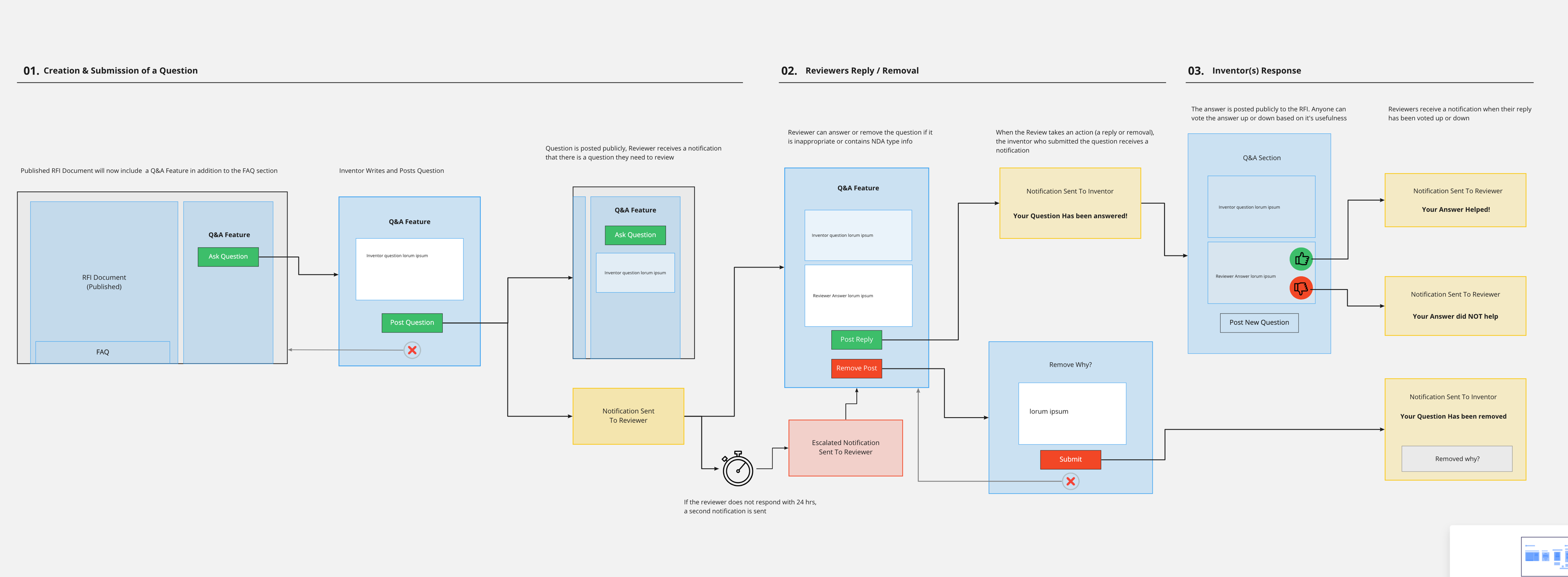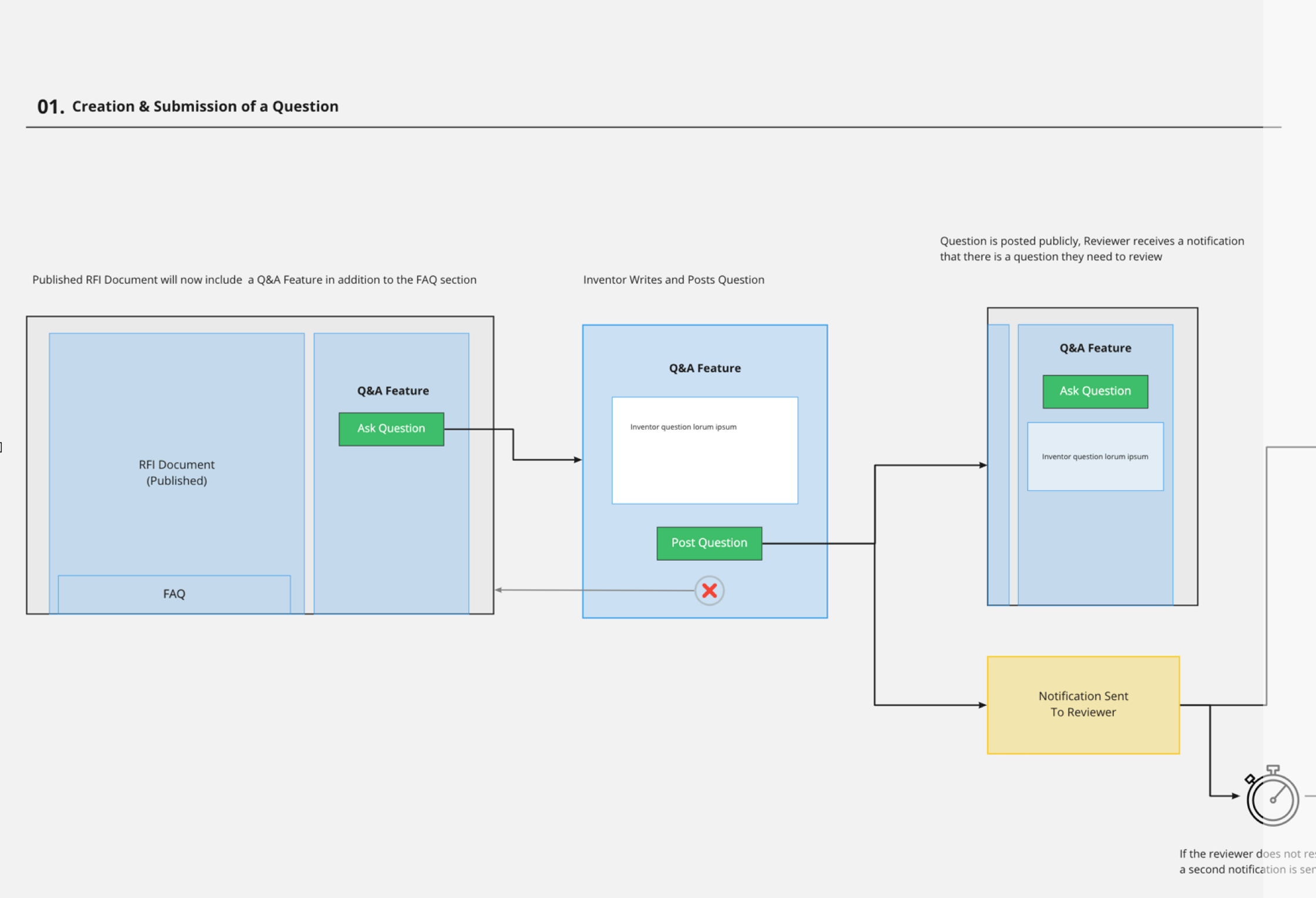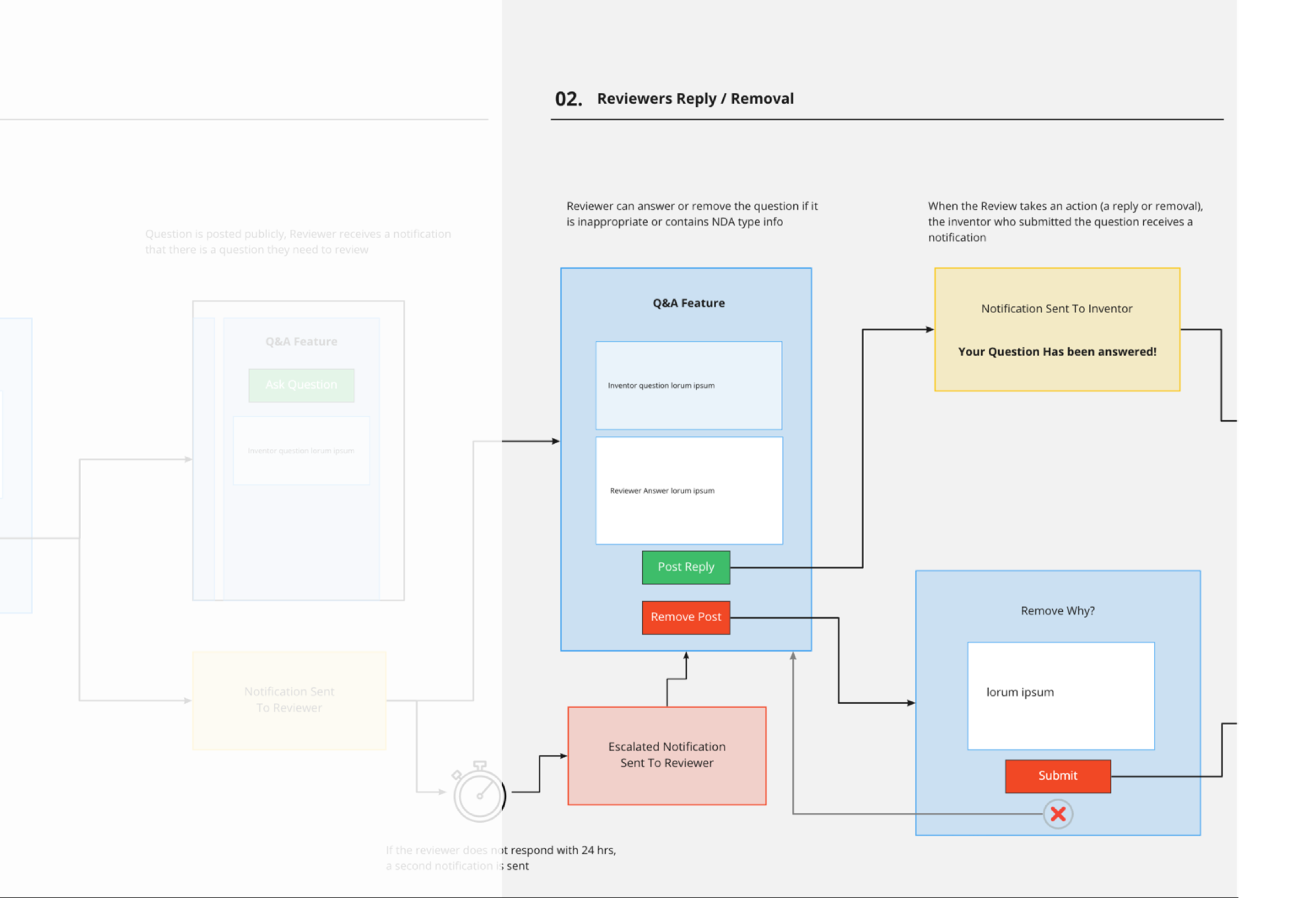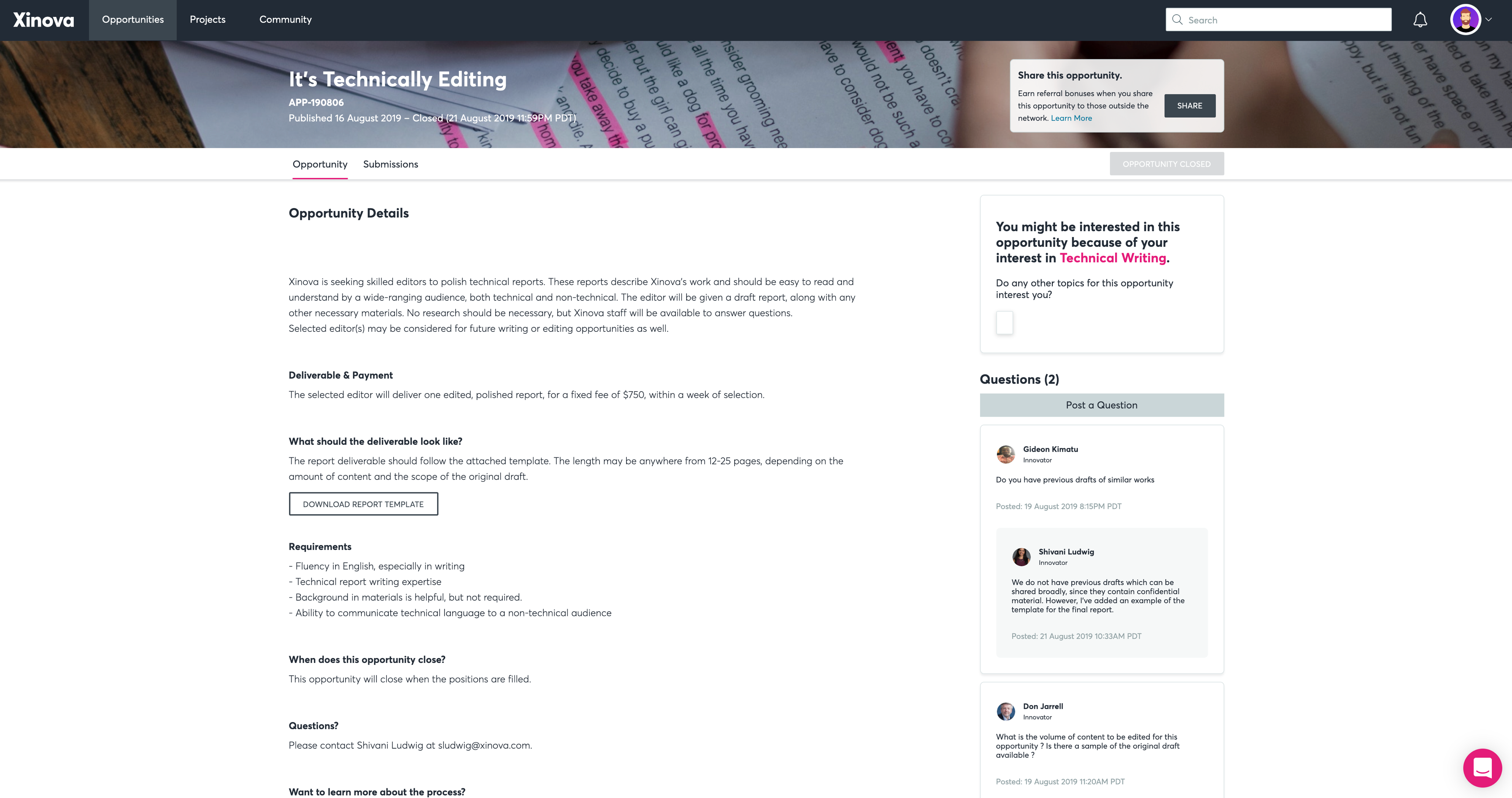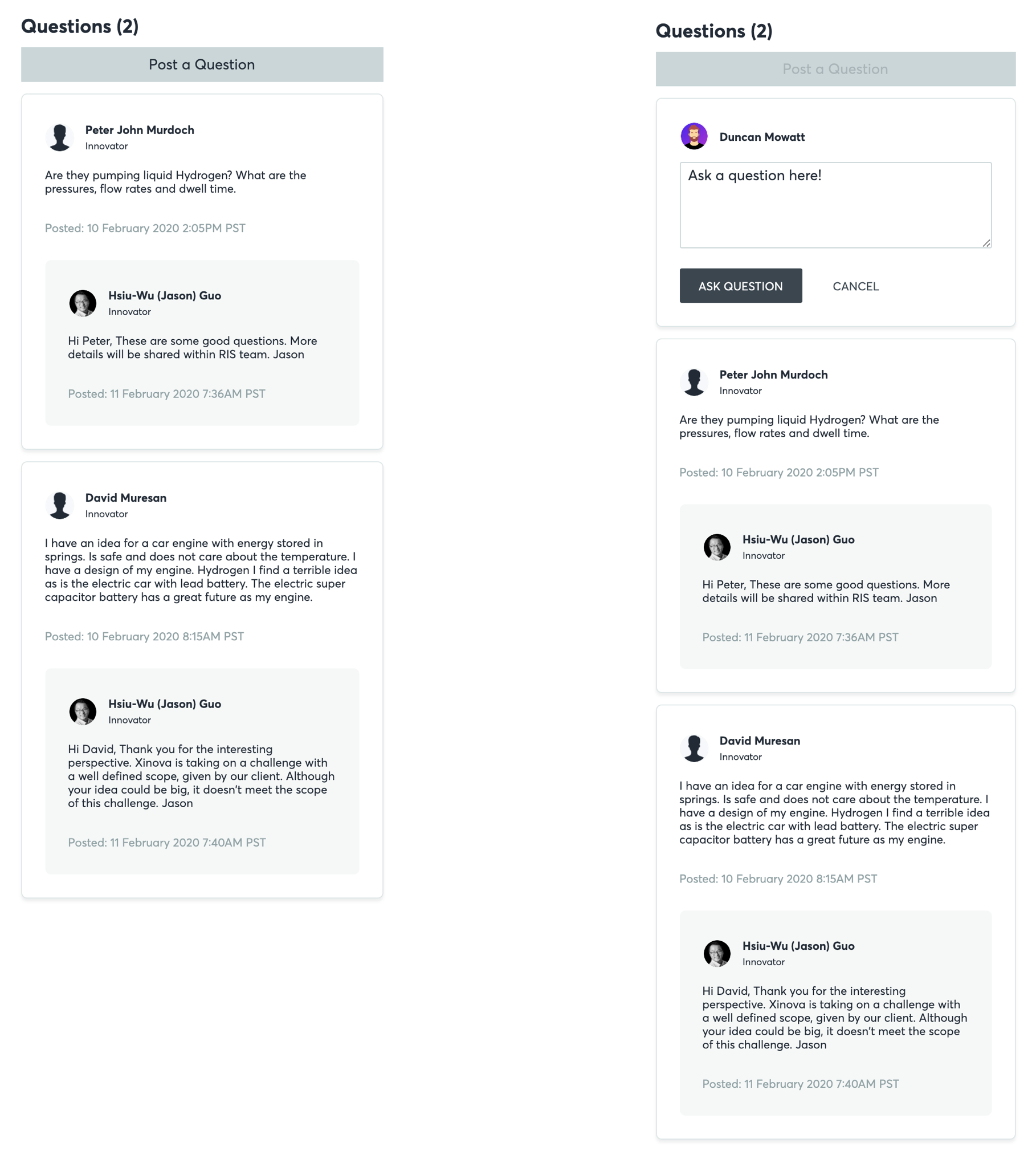Xinova Gen One was a fancy file dropbox built on top of SalesForce. Users would download a word template, work on it offline, and then submit their completed document. They would then wait for an Innovation Manager to accept their submission for review or provide feedback. They would then be emailed about acceptance or rejection.
Xinova Gen Two is a react app that has authoring, submission, and review all built into the online platform with integrated notifications and messaging. It drastically lowered the bar for entry and increased submissions 5-6x from a wider array of Inventors with very broad skillsets. This led to a new issue: overload.
Since we now accepted submissions from non-experts, it led to a dramatic increase in questions via email. These questions came in two different waves: immediately upon publishing or the day before the opportunity closed. The Inovation Mangers quickly became overwhelmed, which led to a series of other issues - Innovation Managers would spend hours a day answering emails instead of focusing on customer manageent. Since there was no way to track the reply in context of the request, they also routinely lost track of who they had already replied to (or missed) and the information given out lacked consistancy.
These issues delayed inventors research/writing time and led to unnecessary rejections. Our Innovators quickly began voicing their complaints and we realized we needed to move quickly before the issue got out of hand.



